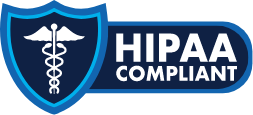- Services »
- Technology Platforms »
- Industries »
- Innovation »
- ILabs 2.0
- B2B 360
- B2B360 AI
- Boomi AI Agents
- Cargo Planning Controls
- Cloud-FIT
- Convertorama
- DataFirst AI
- EDI Snowflake Data Hub
- Fab-a-Lot
- Finance Assist
- Finance AI Solution
- FinClose AI
- GEN-EDI
- GxP Validation
- InfatoODI 2.0
- Smart Lot Flow Management
- Business Activity Lens
- Healthcare AI
- Insight-Sell AI
- JadeConnect Integration
- Jade Data Enricher
- ServiceNow RightStart
- SCM AI Insight
- SuiteLift
- Oracle Cloud Migrator
- OMNI AI
- JSubscribe
- Jvaluation
- Kanverse
- Knowledge Base AI
- KnowEn-Tick
- Oracle Cloud Migrator
- OpsWatcher
- Pre-Auth AI
- Propero R12 Upgrade
- SSIS RiskView
- Snowflake Consumption Metrics
- Snowflake Test Data Management
- SnowPulse AI
- TariffImpactAI
- Technovate
- Track & Trace
- Xenon
- UserEase
- Ops Agent
- ProbManage
- —
- Insights »
- About Jade »
- Careers
- Let's Talk
Welcome to the Most Client-Centric IT consulting space - where your vision drives us to deliver business impact. We're committed to Accelerating Your Growth by making you Cloud-ready, Data-ready, and AI-ready.
22+
Years of
Experience
2000+
Skilled
Professionals
4.8
CSAT
Score
20+
ISV
Partners
Quality & Compliance are Non-Negotiables




Some Client Love
Got You Covered with a Rich ISV Ecosystem
We are hand in glove with your technology landscape which gives us an edge in helping you beyond applications, solutions, and platforms.
Insights to Broaden Your Horizon

Matthew Riedel
The iconic face of Jade Brand is a professional golfer of PGA Tour fame, symbolizing both elegance and athletic achievement.







































































